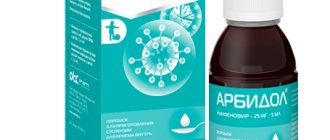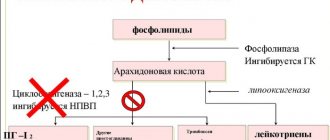Chemomycin 500 mg (tablets)
Antacids
Antacids do not affect the bioavailability of azithromycin, but reduce the maximum blood concentration by 30%, so the drug should be taken at least one hour before or two hours after taking these drugs and eating.
Cetirizine
Concomitant use of azithromycin with cetirizine (20 mg) for 5 days in healthy volunteers did not lead to pharmacokinetic interaction or a significant change in the QT interval.
Didanosine (dideoxyinosine)
The simultaneous use of azithromycin (1200 mg/day) and didanosine (400 mg/day) in 6 HIV-infected patients did not reveal changes in the pharmacokinetic parameters of didanosine compared to the placebo group.
Digoxin (P-glycoprotein substrates)
Concomitant use of macrolide antibiotics, including azithromycin, with P-glycoprotein substrates, such as digoxin, leads to increased concentrations of P-glycoprotein substrate in the blood serum. Thus, with the simultaneous use of azithromycin and digoxin, it is necessary to take into account the possibility of increasing the concentration of digoxin in the blood serum.
Zidovudine
Concomitant use of azithromycin (single dose of 1000 mg and multiple doses of 1200 mg or 600 mg) has little effect on the pharmacokinetics, including renal excretion, of zidovudine or its glucuronide metabolite. However, the use of azithromycin caused an increase in the concentration of phosphorylated zidovudine, a clinically active metabolite in peripheral blood mononuclear cells. The clinical significance of this fact is unclear.
Azithromycin interacts weakly with isoenzymes of the cytochrome P450 system. Azithromycin has not been shown to participate in pharmacokinetic interactions similar to erythromycin and other macrolides. Azithromycin is not an inhibitor or inducer of cytochrome P450 isoenzymes.
Ergot alkaloids
Given the theoretical possibility of ergotism, the simultaneous use of azithromycin with ergot alkaloid derivatives is not recommended. Pharmacokinetic studies were conducted on the simultaneous use of azithromycin and drugs whose metabolism occurs with the participation of isoenzymes of the cytochrome P450 system.
Atorvastatin
Concomitant use of atorvastatin (10 mg daily) and azithromycin (500 mg daily) did not cause changes in atorvastatin plasma concentrations (based on an HMC-CoA reductase inhibition assay). However, in the post-marketing period, isolated case reports of rhabdomyolysis have been received in patients receiving concomitant azithromycin and statins.
Carbamazepine
Pharmacokinetic studies involving healthy volunteers did not reveal a significant effect on the plasma concentrations of carbamazepine and its active metabolite in patients receiving concomitant azithromycin.
Cimetidine
In pharmacokinetic studies of the effect of a single dose of cimetidine on the pharmacokinetics of azithromycin, no changes in the pharmacokinetics of azithromycin were detected when cimetidine was used 2 hours before azithromycin.
Indirect anticoagulants (coumarin derivatives)
In pharmacokinetic studies, azithromycin did not affect the anticoagulant effect of a single 15 mg dose of warfarin administered to healthy volunteers. Potentiation of the anticoagulant effect has been reported after simultaneous use of azithromycin and indirect anticoagulants (coumarin derivatives). Although a causal relationship has not been established, the need for frequent monitoring of prothrombin time should be considered when using azithromycin in patients receiving indirect oral anticoagulants (coumarin derivatives).
Cyclosporine
In a pharmacokinetic study involving healthy volunteers who took azithromycin (500 mg/day once) orally for 3 days, followed by cyclosporine (10 mg/kg/day once), a significant increase in maximum plasma concentration (Cmax) and area under the concentration-time curve (AUC0-5) of cyclosporine. Caution is advised when using these drugs together. If simultaneous use of these drugs is necessary, it is necessary to monitor the concentration of cyclosporine in the blood plasma and adjust the dose accordingly.
Efavirenz
Concomitant use of azithromycin (600 mg/day once) and efavirenz (400 mg/day) daily for 7 days did not cause any clinically significant pharmacokinetic interaction.
Fluconazole
Concomitant use of azithromycin (1200 mg once) did not change the pharmacokinetics of fluconazole (800 mg once). The total exposure and half-life of azithromycin did not change with simultaneous use of fluconazole, however, a decrease in Cmax of azithromycin was observed (by 18%), which had no clinical significance.
Indinavir
Concomitant use of azithromycin (1200 mg once) did not cause a statistically significant effect on the pharmacokinetics of indinavir (800 mg three times a day for 5 days).
Methylprednisolone
Azithromycin does not have a significant effect on the pharmacokinetics of methylprednisolone.
Nelfinavir
The simultaneous use of azithromycin (1200 mg) and nelfinavir (750 mg 3 times a day) causes an increase in the equilibrium concentrations of azithromycin in the blood serum. No clinically significant side effects were observed and no dose adjustment of azithromycin was required when used concomitantly with nelfinavir.
Rifabutin
The simultaneous use of azithromycin and rifabutin does not affect the concentration of each drug in the blood serum. Neutropenia has sometimes been observed with simultaneous use of azithromycin and rifabutin. Although neutropenia has been associated with the use of rifabutin, a causal relationship between the use of the combination of azithromycin and rifabutin and neutropenia has not been established.
Sildenafil
When used in healthy volunteers, there was no evidence of the effect of azithromycin (500 mg/day daily for 3 days) on the AUC and Cmax of sildenafil or its main circulating metabolite.
Terfenadine
In pharmacokinetic studies, there was no evidence of interaction between azithromycin and terfenadine. There have been isolated cases reported where the possibility of such an interaction could not be completely excluded, but there was no concrete evidence that such an interaction occurred.
It has been found that the simultaneous use of terfenadine and macrolides can cause arrhythmia and prolongation of the QT interval.
Theophylline
No interaction has been detected between azithromycin and theophylline.
Triazolam/midazolam
No significant changes in pharmacokinetic parameters were detected with simultaneous use of azithromycin with triazolam or midazolam in therapeutic doses.
Trimethoprim/sulfamethoxazole
Concomitant use of trimethoprim/sulfamethoxazole with azithromycin did not show a significant effect on Cmax, total exposure or renal excretion of trimethoprim or sulfamethoxazole. Azithromycin serum concentrations were consistent with those found in other studies.
Compound
Composition of Hemomycin capsules
One capsule contains the active substance azithromycin - 250 mg (in the form of azithromycin dihydrate - 262.03 mg).
Excipients: anhydrous lactose, corn starch, magnesium stearate, sodium lauryl sulfate. The capsule shell consists of: titanium dioxide, patented blue dye, gelatin.
Composition of powder for oral suspension (5 ml)
The active substance is azithromycin - 100 mg or 200 mg, depending on the dosage (in the form of azithromycin dihydrate - 104.809 mg or 209.6 mg, depending on the dosage).
Excipients: xanthan gum, colloidal silicon dioxide, sodium saccharinate, calcium carbonate, strawberry flavor, anhydrous sodium phosphate, sorbitol, apple flavor, cherry flavor.
Composition of film-coated tablets
One tablet contains the active substance azithromycin - 500 mg (in the form of azithromycin dihydrate ).
Excipients: silicate cellulose, MCC, sodium carboxymethyl starch, povidone, magnesium stearate, talc, colloidal silicon dioxide.
The composition of the film shell includes: ethylcellulose, titanium dioxide, talc, macrogol 600, indigo carmine, copovidone, green lacquer dye, quinoline yellow.
Composition of the lyophilisate for the preparation of infusion solution
One bottle contains azithromycin (in the form of dihydrate) - 500 mg.
Excipients: citric acid monohydrate, mannitol, sodium hydroxide.
Hemomycin analogs
Level 4 ATC code matches:
Ecositrin
Azicine
Rovamycin
AzitRus
Safocid
Clarithromycin
Sumamed Forte
Klarbakt
Azithromycin
Azitro Sandoz
Sumamed
ZI-Factor
Azitral
Azimed
Azicide
Spiramycin-vero
Zitrolide
Ecomed
Macropen
Klacid SR
There are numerous analogues of the drug, here are some of them:
- Zithromax
- Azithromycin
- Ziomycin
- Zithrocin
- Zomax
- Sumamed
Hemomycin price
In Russia, the price of Hemomycin 500 mg (tablets) ranges from 250 to 350 rubles, the price of an antibiotic in 250 mg capsules ranges from 200 to 300 rubles, the price of Hemomycin suspension 200 mg/5 ml (made for children) is 200-250 rubles , and suspensions 100 mg/5 ml – 130-150 rubles.
In Ukraine, the average price of Hemomycin in tablets of 500 mg is 100 UAH, capsules of 250 mg are 60 UAH, suspensions of 100 mg/5 ml and 200 mg/5 ml are 70 and 110 UAH, respectively.
- Online pharmacies in RussiaRussia
- Online pharmacies in UkraineUkraine
ZdravCity
- Chemomycin tablets p.p.o.
500 mg 3 pcs. Hemofarm A.D. RUB 267 order - Hemomycin capsules 250 mg 6 pcs. Hemofarm A.D. Vršac, branch Production site Šabac
RUB 274 order
- Hemomycin powder for prig suspension. for internal approx. 100mg/5ml 11.43gHemofarm
136 RUR order
Pharmacy Dialogue
- Hemomycin powder for suspension 100mg/5ml bottle 11.43gHemofarm
126 rub. order
- Hemomycin (vial 200mg/5ml 10g)Hemofarm
124 RUR order
- Hemomycin (caps. 250 mg No. 6)Hemofarm
RUB 299 order
- Hemomycin (tab.p.pl/vol.500mg No. 3)Hemofarm
RUB 278 order
show more
Pharmacy24
- Hemomycin 250 mg No. 6 capsules Hemofarm AD, Serbia
63 UAH. order - Hemomycin 500 mg No. 3 tablets Hemofarm AD, Serbia
109 UAH order
Contraindications
- allergy to azithromycin or another representative of the macrolide ;
- severe damage to the liver and kidneys;
- lactation;
- with caution: pregnancy , arrhythmia (possible ventricular rhythm disturbances and prolongation of the QT segment), children with pronounced changes in liver or kidney function;
- age under 12 years and weight up to 45 kg in children (for capsules, tablets and suspension with a dosage of 200 mg), up to 6 months (for suspension with a dosage of 100 mg);
- Prescribe with caution during pregnancy and rhythm disturbances.
Release form
Chemomycin is available in four forms:
- The capsules are blue, containing white powder inside, 6 such capsules in a blister, one blister in a cardboard package.
- Powder for the preparation of suspension for oral administration - has a white or close to white color with a fruity aroma (the prepared suspension has an almost white color with a fruity aroma), 10 grams (at a dosage of 200 mg) or 11.43 grams (at a dosage of 100 mg) of powder in a dark glass bottle with a measuring spoon, one such bottle and a measuring spoon in a cardboard box.
- Round tablets with convex sides, covered with a blue film, three such tablets in a blister, one such blister in a cardboard package.
- The lyophilisate is a white powder or a mass pressed into a tablet, 500 mg of such powder in a glass bottle, one such bottle in a cardboard box.
Reviews of Hemomycin
Reviews on forums about Hemomycin allow you to form a positive opinion about the effectiveness of the drug. However, the use of the drug for children may result in side effects from the gastrointestinal tract (reports of this are not uncommon).
Which is better: Sumamed or Hemomycin?
The drugs have the same composition and largely repeating release forms and dosages. Reports of the use of the drugs do not show a significant difference in treatment results in favor of any of them. Therefore, patients often choose Hemomycin due to its lower price.
Indications for use
Infectious-inflammatory diseases:
- respiratory and ENT organs ( sinusitis , tonsillitis , tonsillitis , pneumonia , otitis media , bronchitis );
- soft tissues and skin ( impetigo , erysipelas , secondary infected dermatoses );
- genitourinary tract ( urethritis , cervicitis );
- stomach and duodenum associated with Helicobacter pylori (as part of multicomponent therapy);
- Lyme disease and scarlet fever .
Side effects
Side effects caused by capsules:
- From the digestive tract: nausea, abdominal pain, diarrhea , vomiting, temporary increase in the activity of transaminases and other liver enzymes. Rarely - melena , jaundice .
- Dermatological reactions: rash .
Suspension and tablets may cause the following side effects:
- From the digestive tract: diarrhea , vomiting, nausea, abdominal pain, flatulence, melena , jaundice , temporary increase in transaminase ; in children - lack of appetite, constipation, gastritis .
- From the cardiac system: tachycardia , chest pain.
- From the central nervous system: headaches, dizziness, drowsiness; in children - hyperkinesia , anxiety, insomnia.
- From the genitourinary system: nephritis (rarely), vaginal candidiasis .
- Allergic reactions: rash, angioedema , in children - conjunctivitis , urticaria .
- In very rare cases, oral candidiasis

